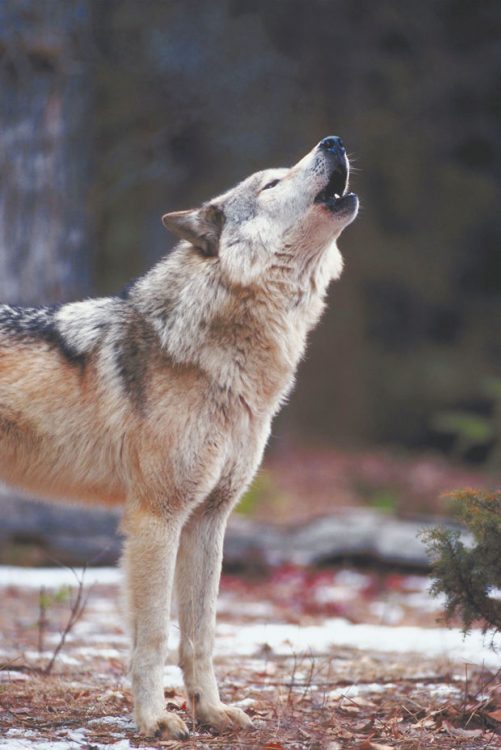
Please Visit this page and add your comments…. They seem to think that nothing at all will adversely effect the wolf population… Protect The Wolves® has to ask what scientist that accepted payment for making these claims???
Please Click this Link and add your Comment: Regulations.gov – Docket Folder Summary
https://www.regulations.gov/docket?D=APHIS-2017-0023
Summary:
Management of Wolf Conflicts and Depredating Wolves in Minnesota
Source: Regulations.gov – Docket Folder Summary
STUDY SNIPPET: its 225 pages Long at the above Link
Wolf Damage and Conflict Management in Minnesota i SUMMARY The United States Department of Agriculture (USDA), Animal and Plant Health Inspection Service, Wildlife Services (WS), the Minnesota Department of Natural Resources (MNDNR) and the U.S. Department of the Interior Fish and Wildlife Service (USFWS) have prepared a new Environmental Assessment (EA) analyzing the potential environmental impacts of alternatives for WS involvement in managing gray wolf (Canis lupus) damage and conflicts in Minnesota. This analysis addresses wolf management in Minnesota while currently protected under the ESA and while under state/tribal management after delisting. Once completed, this EA and the resulting agency Decision will replace the EA completed by WS, the MNDNR and the USFWS in April 2002 (USDA 2002). WS consulted with the Minnesota Department of Natural Resources, Great Lakes Indian Fish and Wildlife Commission, 1854 Treaty Authority, the Minnesota Chippewa Tribe, Leech Lake Band of Ojibwe, Fond du Lac Band of Lake Superior Chippewa, Red Lake Band of Chippewa Indians, Voyageurs National Park, and Superior National Forest during preparation of this EA. Three alternatives for WS involvement in Minnesota wolf conflict management are analyzed including the Preferred Alternative, Integrated Wolf Damage Management (IWDM). Under the preferred alternative, WS would use and/or recommend the full range of legal, practical and effective nonlethal and lethal methods for preventing or reducing wolf damage while minimizing harmful effects of damage management measures on humans, wolves, other species, and the environment in accordance with applicable Federal, State and Tribal wolf management plans. Management strategies would be developed for individual sites by applying the WS Decision Model (Slate et al. 1992). When appropriate, farm management practices (animal husbandry), frightening devices, exclusion, and livestock guarding animals would be recommended and utilized to reduce wolf damage. In other situations where permitted under applicable regulations and agency and tribal authorizations, wolves would be removed as humanely as possible using foot-hold traps, cable devices, and shooting.
In determining the damage management strategy, preference would be given to nonlethal methods when they are deemed practical and effective. Lethal methods would be used to reduce damage after practical and appropriate nonlethal methods have been considered and determined to be ineffective or inappropriate in reducing damage to acceptable levels. However, nonlethal methods may not always be applied as a first response to each damage problem. The most appropriate initial response to a wolf damage problem could be a combination of nonlethal and lethal methods, or there could be instances where application of lethal methods alone would be the most appropriate strategy. WS damage management assistance could be provided on private or public property in Minnesota when the resource owners/managers request assistance to alleviate wolf damage, and agreements have been completed specifying the details of the damage management action to be conducted. The types of verified wolf conflicts that could be addressed include: 1) depredation/injury of domestic animals, 2) injury and/or potential threats to human safety (e.g. habituated/bold wolves). WS could also assist with capture and monitoring of wolves for research purposes and removal of wolf-dog hybrids. All wolf damage management would be conducted in compliance with appropriate federal, state, and local laws. Wolf Damage and Conflict Management in Minnesota ii A second alternative restricts WS to only using and recommending nonlethal WDM methods. Under this alternative, lethal WDM methods could be implemented by entities other than WS (e.g., the MNDNR, tribes, private landowners or their designated agents) in accordance with applicable federal, state and tribal regulations. As with Alternative 1, WS damage management assistance could be provided on private or public property in Minnesota when the resource owners/managers request assistance to alleviate wolf damage, and agreements have been completed specifying the details of the damage management action to be conducted. The types of verified wolf conflicts that could be addressed include: 1) depredation/injury of domestic animals, 2) injury and/or potential threats to human safety (e.g. habituated/bold wolves). WS could also assist with capture and monitoring of wolves for research purposes. All wolf damage management would be conducted in compliance with appropriate federal, state, and local laws. Under the last alternative considered, WS would not be involved in wolf damage management in Minnesota. All requests for WDM assistance including use of nonlethal and lethal methods would be handled by the MNDNR and their designated agents, tribes or private landowners in accordance with state laws and in accordance with the Minnesota Wolf Management Plan. The environmental issues considered for each alternative include impacts on the wolf population, non-target species including state and federally listed threatened and endangered species, public and pet health and safety, humaneness of the methods to be used, and sociological issues including the aesthetic and sociological values of wildlife.

Comments
Why can’t you people leave nature alone, have never seen one in the wild because your killing them off to extinction!